After being granted the honor of testing one of the best GTX 680 graphics cards around – Pont of View/TGT’s GTX 680 Ultra Charged, we must admit we pounced on the chance to put the company’s GTX 670 Ultra Charged through its paces.
GTX 680 Ultra Charged card got a special, three slots wide cooler with three fans, which was a great move. The thermals and noise levels ended up quite low, which is not a small feat considering that the GPU was overclocked.
GTX 670 Ultra Charged comes with non-reference clocks and reference cooling. GPU is up from reference 915MHz to 993MHz. Memory clocks didn’t change from reference values.
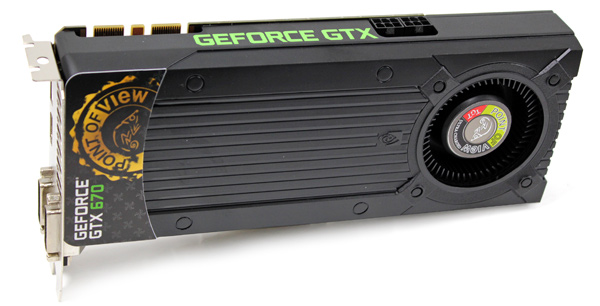
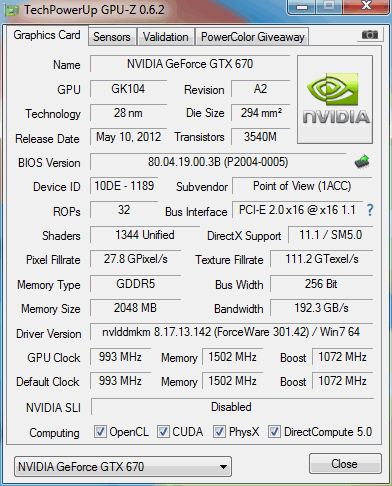
GTX 670 Ultra Charged survived the trip, but it doesn’t look like it was an easy one. Namely, the box was pretty beaten up and squashed at one end.
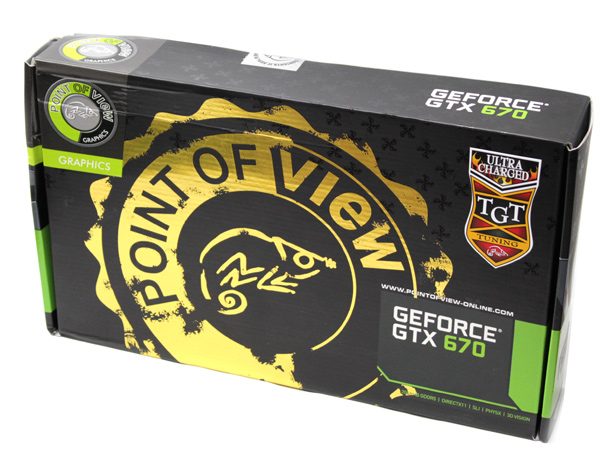
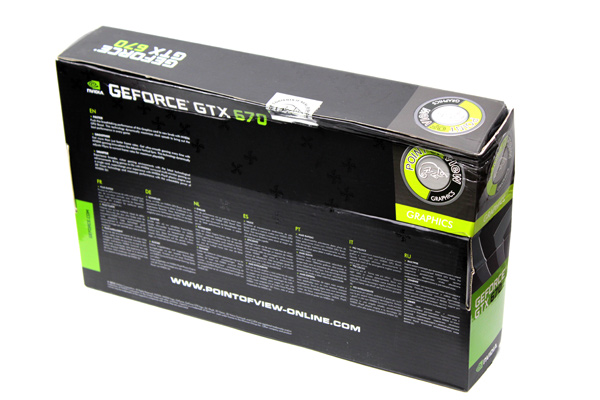
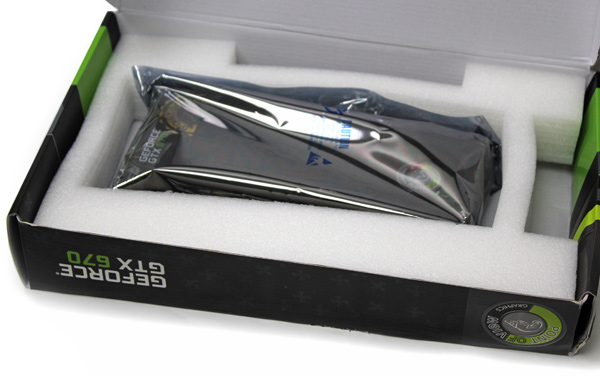
The card has two dual-link DVIs, one standard HDMI and a DisplayPort connector. There are no extra video dongles in the box.
In the box you’ll find:
Quick Installation Guide
Driver CD
Point of View / TGT GTX 670 Ultra Charged graphics card has dual slot air cooling. It’s 24cm long. The only physical difference we noticed between the Ultra Charged’s cooler and Nvidia’s reference design is the plastic with Pont of View/TGT logo. 
Below you can see Nvidia’s reference GTX 670 2GB graphics.
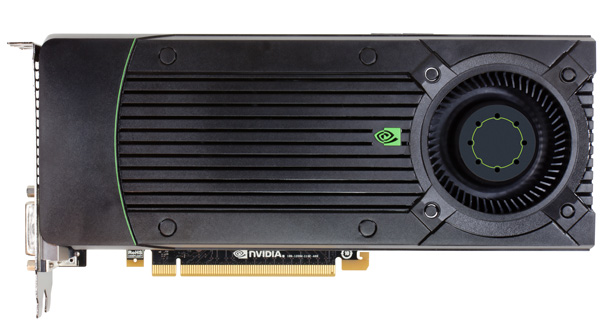
Nvidia GTX 670 2GB
Good thing about reference cooling is that it pushes air out of the case. Naturally, it won’t make a big difference if you have a single GTX 670, but SLI and three-way SLI setups will really love this when they get hot.
Underneath the shroud is a heatsink with a copper base. All the power components were moved towards the I/O panel and the blower style fan is at the opposite end.
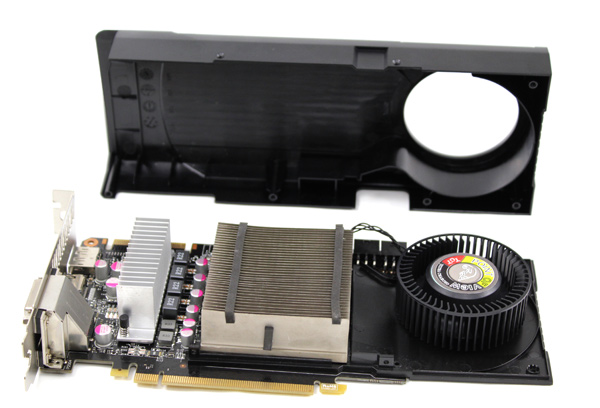
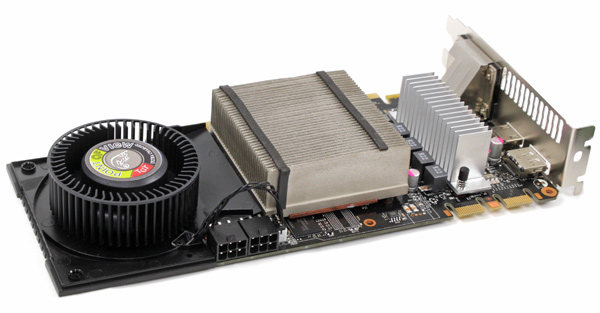
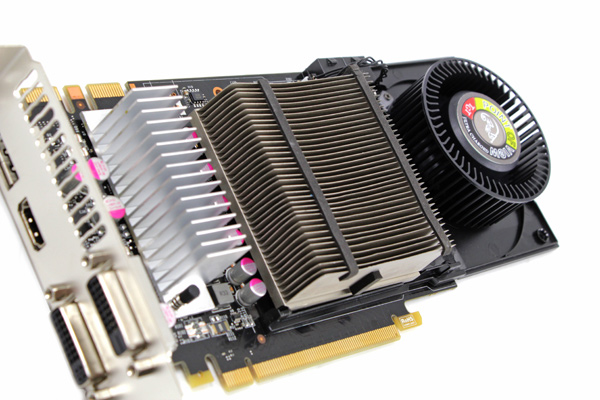
The fan is fixed to a plastic part that can be removed. GTX 670’s PCB is only 17.2cm long.
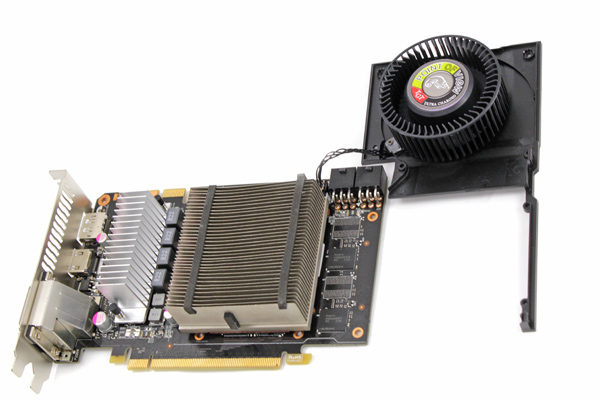
GTX 670 Ultra Charged is powered via two 6-pin power connectors, just like the reference GTX 670 card. The reference GTX 670’s TDP is at 170W, but the Ultra Charged’s clocks mean that we can expect higher TDP.
The card comes with 2GB of memory in eight memory modules. The modules are distributed in a way where each next module is on the opposite side of the PCB.
GTX 670 Ultra Charged runs Hynix memory chips (model No: H5GQ2H24AFR-R0C). The chips are specified to run at 1500MHz (6000MHz GDDR5 effectively).
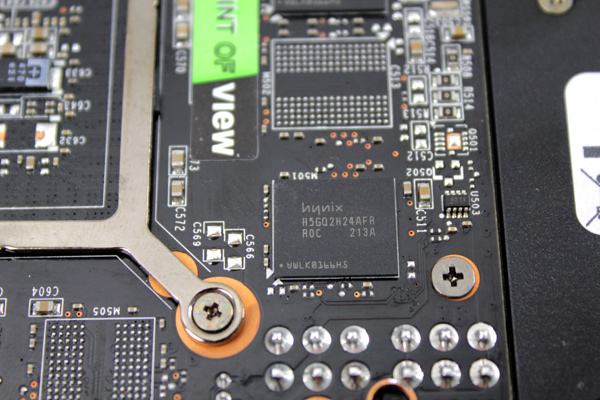
Good news for is that the company kept the identical memory system used on its GTX 680 card, meaning four 64-bit memory controllers (256-bit memory interface), and 2GB of GDDR5 memory.
Memory clocks on GTX 680 and GTX 670 cards are identical – 1502MHz (6008MHz effectively). The Ultra Charged’s GPU is factory overclocked while the memory was left untouched.
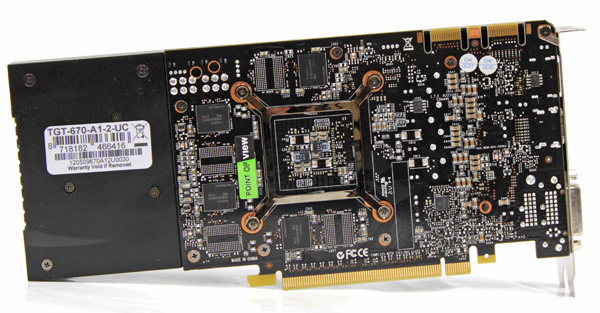
Judging by OC results of all the GTX 680 and GTX 670 cards we’ve tested, overclocking the memory is a breeze.
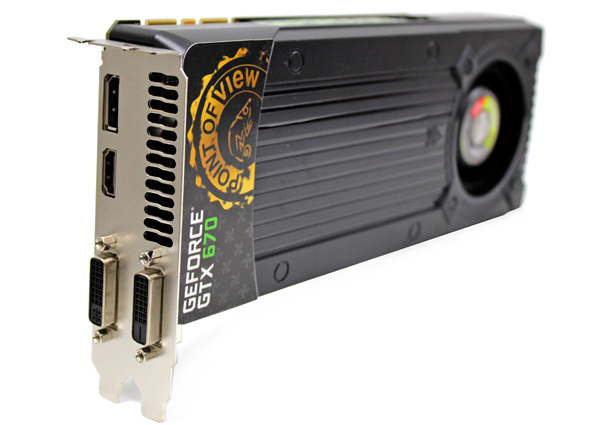
PoV/TGT GTX 670 Ultra Charged comes with two dual-link DVIs, but only one allows using analog VGA converters. VGA will require using the connector that’s in line with HDMI and DisplayPort connectors.
Nvidia has solved what was a thorn in its side for a while, which is the number of displays that can be used simultaneously. Kepler cards can now run up to four displays at the same time.
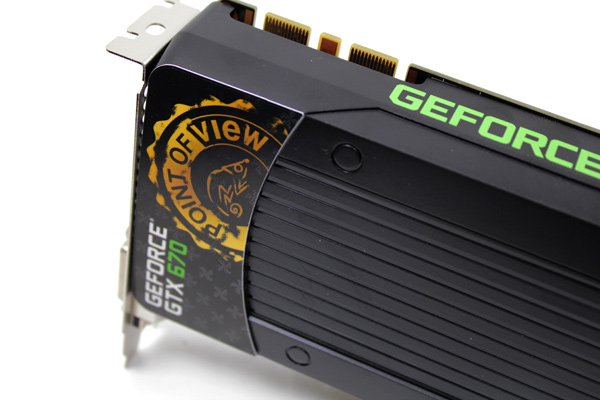
The GTX 670 Ultra Charged has two SLI connectors. The 301.42 driver adds Quad SLI support so users can harness the GTX 670 power to the max. Older drivers limited users to three-way SLI setups.

Motherboard: EVGA X79 FTW
CPU: Sandy Bridge-E Core i7 3820 (3.6GHz)
CPU Cooler: Thermalright HR-02 (Thermalright-Europa Distri www.PC-Cooling.de).
Memory: 8GB ADATA DDR3 1600 XPG Gaming series
Harddisk: OCZ Vertex 2 100 GB
Power Supply: CoolerMaster Silent Pro 1000W
Case: CoolerMaster Cosmos II Ultra Tower
Operating System: Win7 64-bit
Nvidia 301.43-desktop-win7-winvista-64bit-english-whql
12-4_vista_win7_64_dd_ccc.exe
3DMark 11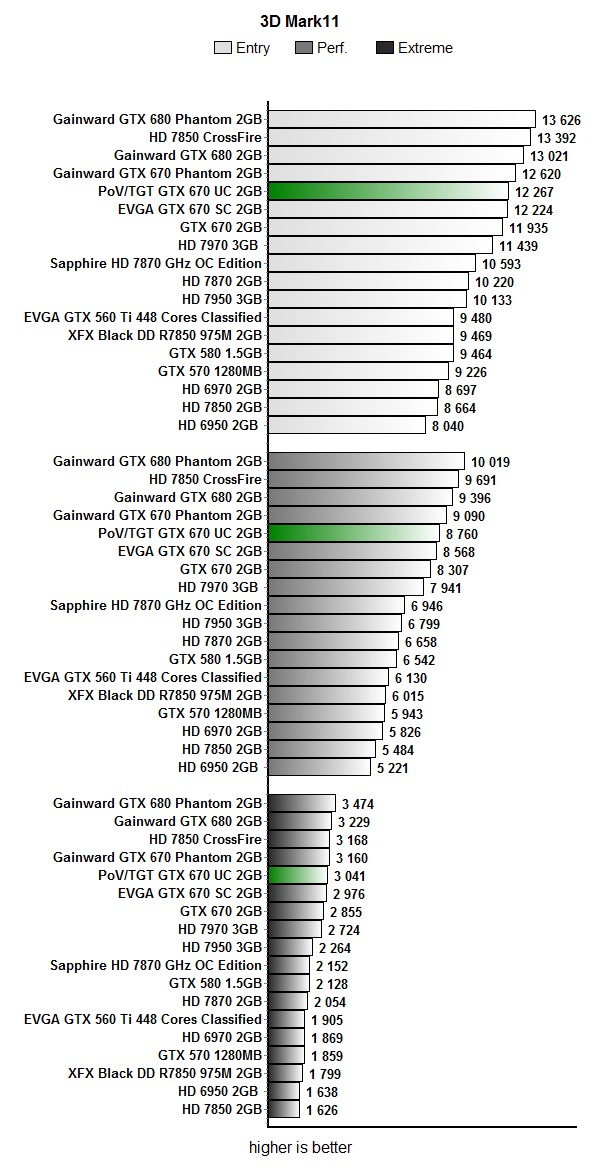
Crysis 2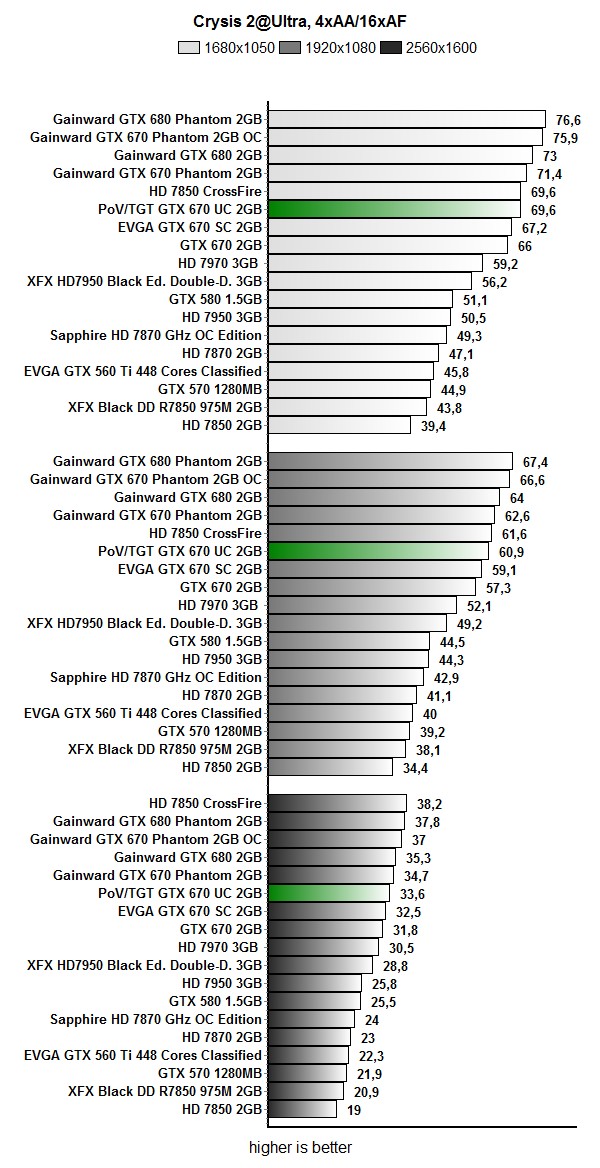
Aliens vs Predator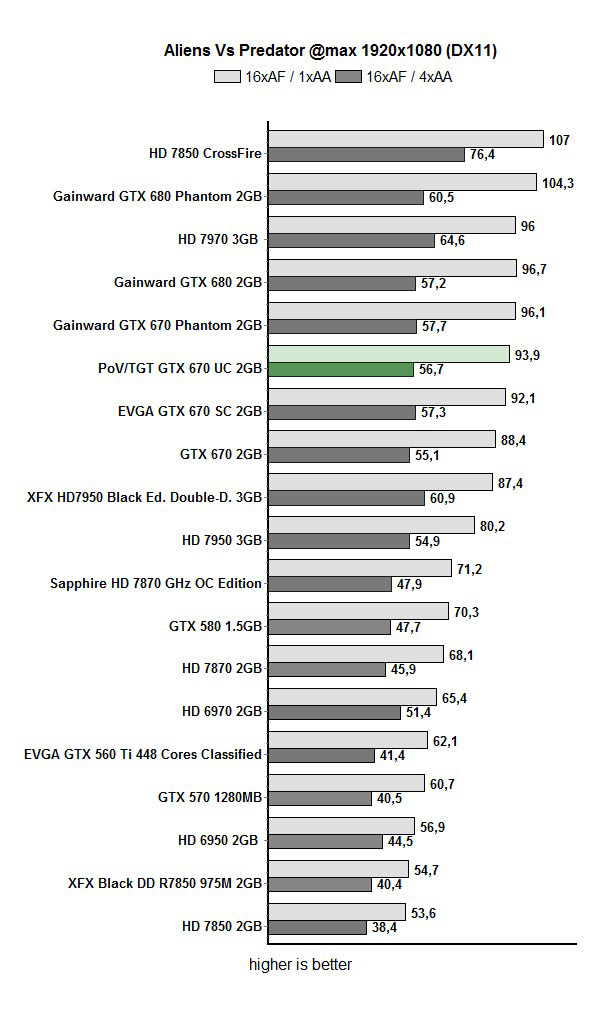
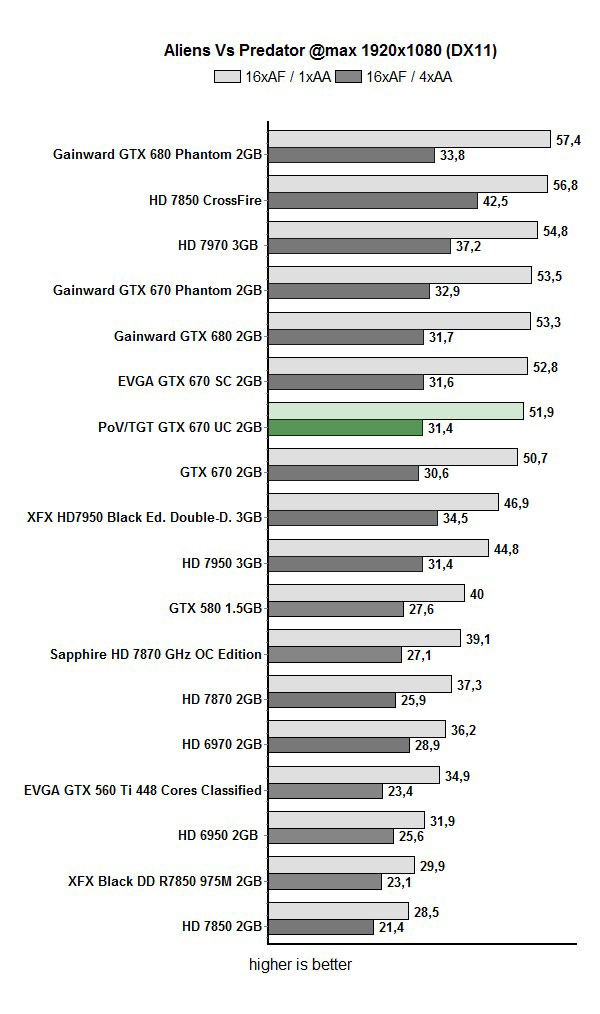
Metro 2033
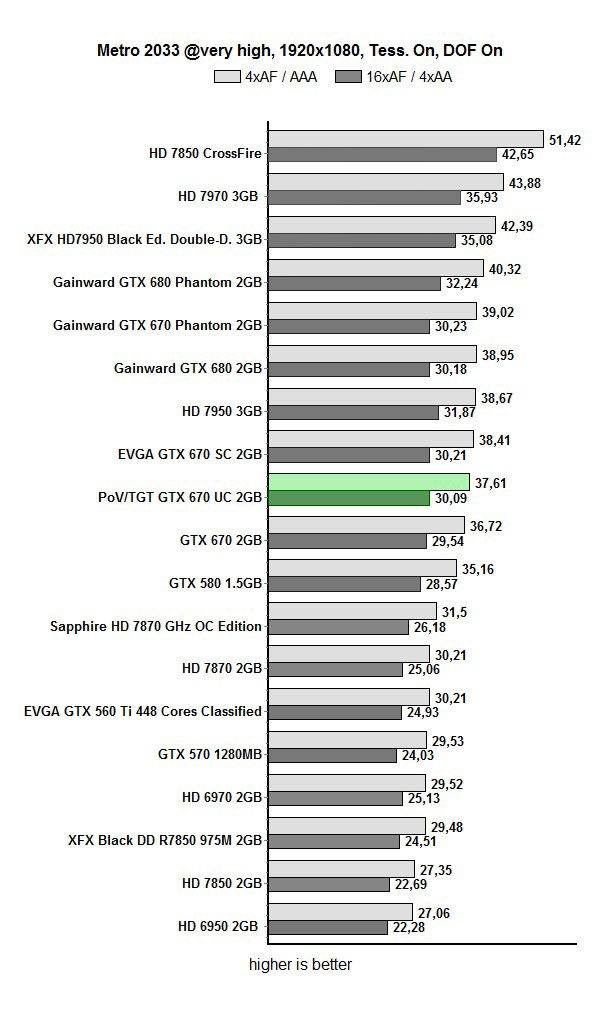
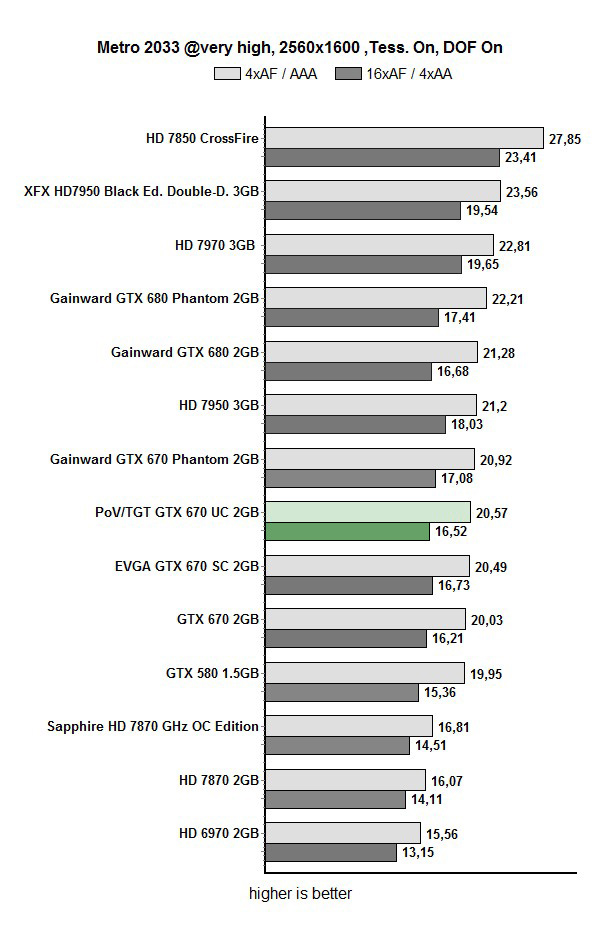
Tessellation: Heaven
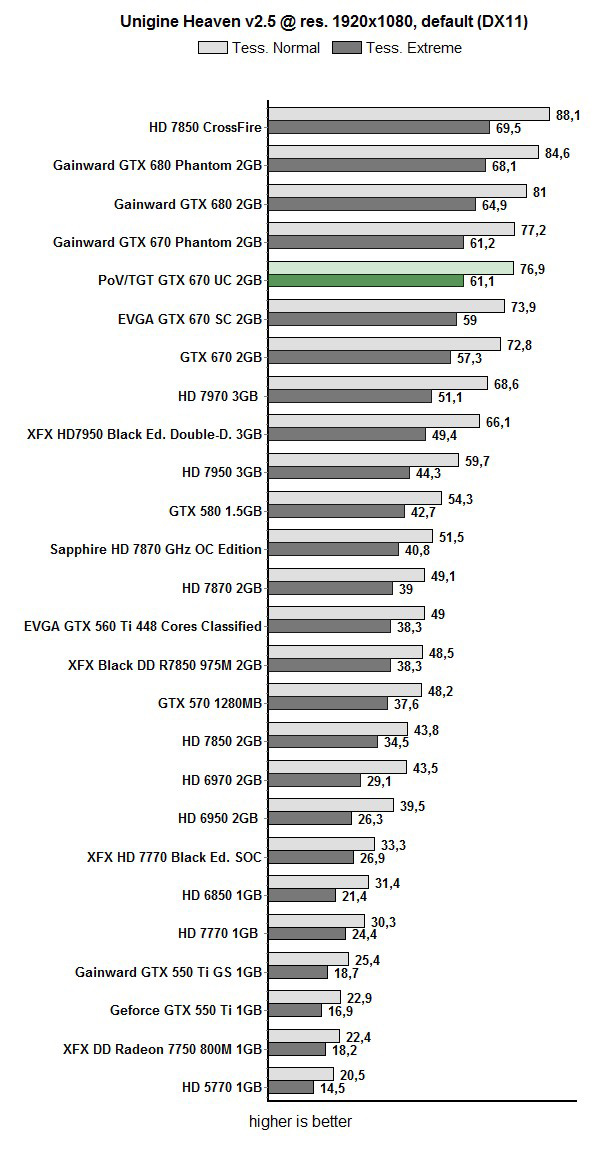
GPU Boost
Point of View / TGT GTX 670 Ultra Charged is based on reference design but is factory overclocked. In fact, only the GPU runs at higher clocks while the memory was left at reference values.
TGT has a meticulous selection of chips for its cards, since their factory overclocks require the best chips, the kind that has a lower leakage and higher average Boost clock. Below is a graph that shows Boost clocks without any additional OC, just the GPU Boost technology in action.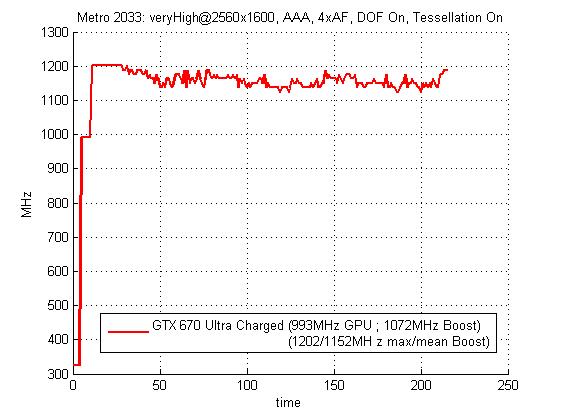
Overclocking
Maximum overclocking of the base GPU clock on our GTX 670 UC card ended up at 1035MHz. Boost was running even after our overclock and we recorded clocks up to 1242MHz. We overclocked the memory by 150MHz (600MHz GDDR5 effectively). We’re convinced that TGT’s effort in picking the best chips would’ve shown in overclocking, but reference cooling meant that we could not squeeze out the maximum. 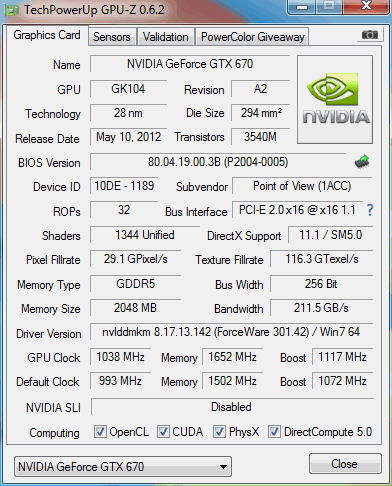
The overclock we did isn’t spectacular, but it was enough for PoV/TGT GTX 670 Ultra Charged to score higher than the reference GTX 680.
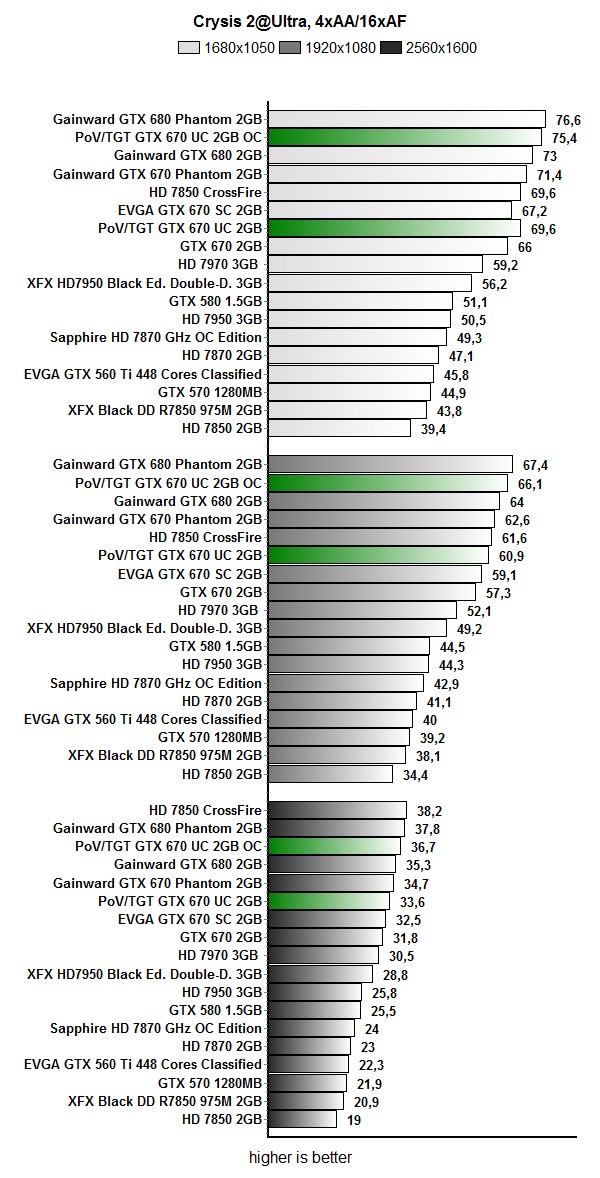
Thermals and Noise
GPU temperatures were within normal values with PoV/TGT’s overclock – we didn’t see it exceed 84ºC. The fan wasn’t too loud but you’ll hear it good in longer gaming sessions, when the card and case get hot. It’s louder than the reference fan, but that’s to be expected with a factory overclock. You’ll hear the fan a bit in idle mode as well, but it’s far from what we’d call loud.
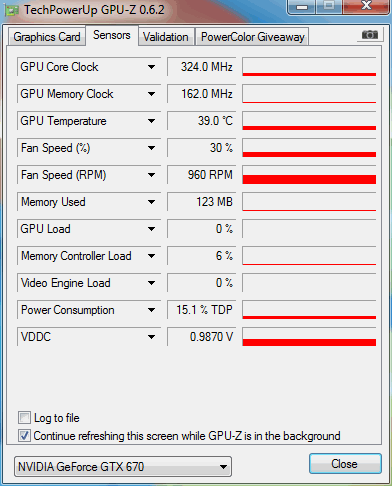
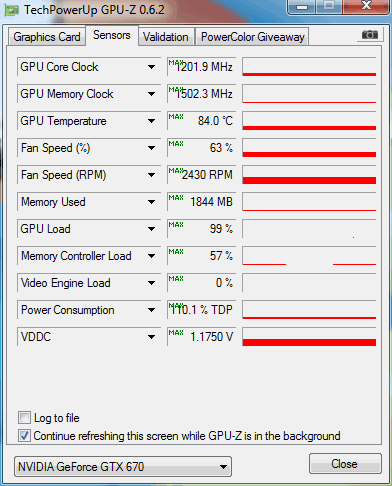
Power Consumption
So far, PoV/TGT GTX 670 Ultra Charged is the fastest model by this Nvidia’s partner. We still haven’t seen the GTX 670 Beast, but we suppose that if there is one, TGT will probably opt for a better cooling solution than the reference one. In fact, the cooler is the only thing we’d change on the GTX 670 Ultra Charged. Namely, the reference cooler is working pretty hard, since it has to cool the GPU that runs at almost 1GHz. As a result, we have a card that’s noisier than the reference one. The fan can be heard well and is one inch from being called loud.
As far as performance goes, the GTX 670 Ultra Charged is a card you’ll definitely love. Gaming at high resolutions was pleasant. In fact, at times we felt as if it was GTX 680 in our rig. Just to make sure we’re not imagining things, we overclocked the GPU and memory, which helped the GTX 670 UC actually outpace the GTX 680.
We checked out EU prices and saw that GTX 670 availability is quite good, especially in German region. However, the high demand brought about varied pricing and the card starts at €340 all the way up to €430. Point of View / TGT dangerously approached this limit and its card is priced at €418.
PoV/TGT GTX 670 Ultra Charged’s results clearly show that gamers will love this card, although they may not feel the same about pricing. It may be wisest to wait a bit for availability and AMD to bring about Nvidia’s price adjustments, but if you’re impatient to get your mitts on this card, you definitely won’t make a mistake.

